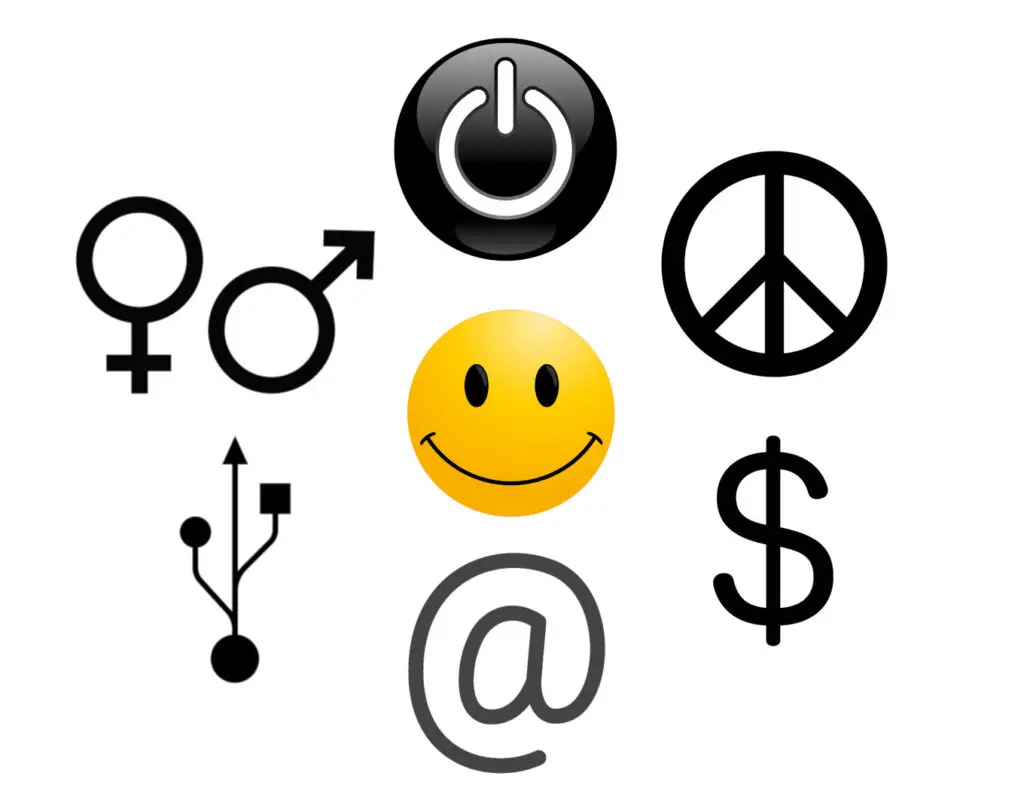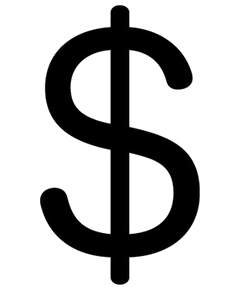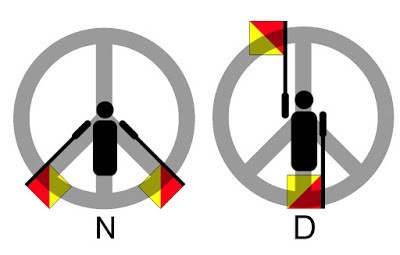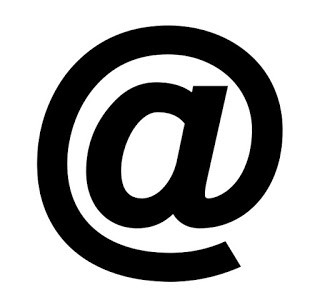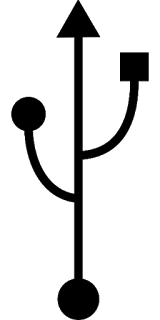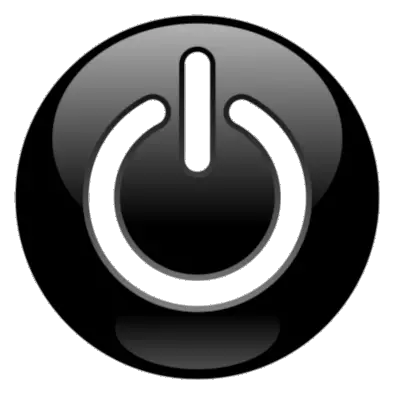We’ve all seen these symbols, but where did they come from, and how did they start? Some of the answers may surprise you.
The Dollar Sign
The dollar sign is the most recognized symbol worldwide for money. Its origin is somewhat murky, however, as there are several theories on how it became an “S” with a line through it.
The most widely held theory is that it can be traced to the use of the Spanish peso during the late 1700s in colonial America. The peso, or “piece of eight” in America, was written as PS. It’s believed that over time the S was more often written over the P, which would make a rough look for the $ symbol. The $ symbol first appeared in print after 1800, and when the first U.S. paper dollar was issued in 1875, the $ symbol was on it.
Another popular belief is that the symbol originated hundreds of years before the 1700s, likely dating back to the 15th century in Spain. King Ferdinand II of Aragon had pushed the Moors out of Spain in 1492, and to commemorate the occasion, he added two columns to his coat of arms, which represented the Pillars of Hercules. In addition, a ribbon was added that wrapped around them. The coat of arms showed he had taken the Iberian Peninsula and the Strait of Gibraltar, where in Greek mythology, the Pillars of Hercules were located.
Spanish explorers brought back gold and silver from the New World after 1492, and the coins were stamped with the new coat of arms. This returns to how the Spanish peso was used in colonial America. The two pillars eventually became one, and the surrounding drape became the S.
The Peace Symbol
The peace symbol, an icon of the 1960s, was actually designed in 1958 for use in a specific protest march. A group called the Direct Action Committee Against Nuclear War held a march supporting the Ban the Bomb movement in London. A textile designer named Gerald Holtom from London wanted to make a symbol the protesters could use.
Holtom had been a conscientious objector in World War II and supported the current anti-nuclear movement. He used the flag signaling system for conveying information, called flag semaphore, to come up with the figure. In the signal for the letter “N,” the signaler has their arms down and slightly out to their side, and this stood for nuclear. The signal for the letter “D” stood for disarmament, and the signaler has one arm straight up, and the other arm straight down. The meaning to Holtom was that the figure shown by the lines is in despair with their arms dropped toward the ground.
When the march started on April 4, 1958, the image was already being spread around the world by newspapers covering the event. Life magazine was the first to publish the image in the U.S. on April 14, 1958. The symbol became the icon of the 60s countercultural movement, and we’ve had it around ever since.
The Symbols for Male and Female
The symbol for male and female have their roots in the Middle Ages and are influenced by Roman mythology. Astronomers during the Middle Ages used symbols to designate each planet they observed. They used the female symbol for Venus and the male symbol for Mars.
Venus, in Roman mythology, was the goddess of love, and Mars was the Roman god of war. Based on these Roman gods, each symbol became associated with male and female. Why the symbols look the way they do isn’t as clear. One held belief is that it represents genitalia. Another is that the female symbol looks like a mirror, and it was sometimes called the “mirror of Venus.” There is also a notion that the female symbol is a crude version of the Greek letter, phi. While there are no clear-cut answers to why they look the way they do, they are still used extensively today.
The @ Symbol
The first recorded use of the @ symbol was in 1536 by a Florentine merchant to denote units of wine that were called amphorae, but there isn’t any certainty how or why it got its shape.
Fast forward to 1971 when Ray Tomlinson had a problem connecting people who programmed computers to one another. Programmers were hindered by the fact that they had to connect by phone and a teletype machine (a keyboard with a built-in printer), and the computers weren’t connected to each other.
Tomlinson’s company had been hired by the U.S. government to develop the precursor to today’s internet called ARPANET. Addresses were needed that could be sent through ARPANET and arrive to the person at another computer. The system address needed a person’s name and the computer where they were sitting.
A symbol that was already in use by the system couldn’t be used for this new addressing system, however. Tomlinson happened to see the @ symbol on his teletype machine, and he had already been looking for something that wasn’t often used. He sent himself the first email message, and it went from the teletype he was using through the network and arrived back to another teletype in the room. Tomlinson doesn’t remember what he put in that first-ever email message, but using that little @ symbol has changed the way humans communicate.
The USB Symbol
The Universal Serial Bus is another symbol that is seen everywhere in the modern age. It allows users to connect electronic devices to a computer. This standard was made so a computer would recognize that an attachment has been made to the USB. Any number of devices can then be connected directly to the computer and “hot swapped,” or took on or off, while the computer is still on.
The USB symbol is modeled after the three-pronged trident that was carried by the Roman god of the sea, Neptune. It is supposed to represent power, or the “power” a user can have by connecting their devices to a computer via a USB. The shapes at the end of each spear tip — a circle, triangle, and square — represent the many options and devices a user has at their disposal using the USB.
The Power Button
The power button symbol has evolved from the simple words of on and off. The on/off configuration was changed to the universal system using the numerals 1 and 0 to denote on and off. The power symbols were first described in the International Electrotechnical Commission standard, Graphical symbols for use on equipment, in 1973. The concept uses the binary codes of 1 for on, and 0 for off, the same language that runs every computer program.
I
This indicates the equipment is in a fully powered state. (1 means on)
O
This one means the power is off to the equipment. (0 means off)
This one has a slightly different meaning. This is the standby symbol having a partially broken circle with the line going through it. This means that this particular equipment doesn’t completely disconnect with the power supply when in the 0, or off position. This symbol is universally known as power.
This symbol means the equipment can switch a device between on and off completely.
A waning moon is a replacement for the standby symbol. It’s time to sleep.
The Smiley Face
The origin of the smiley face is largely attributed to Harvey Ross Ball, an American graphic designer and advertiser. He came up with the smiley face for an insurance company that was trying to boost the morale of its employees after the company had gone through many acquisitions.
He made the design in ten minutes and was paid $45 for it. The company spread the image amongst themselves, and then it spread further and was widely imitated. The insurance company, nor Ball, got a copyright or trademark on the design, and this opened the doors for others to do whatever they wanted with the image.
Bernard and Murray Spain, brothers that owned two Hallmark shops, saw the image in a button shop and appropriated it. They knew Ball had designed it, but they stuck “Have a Happy Day” on it and put in for a copyright in 1971. They sold 51 million buttons and other novelties by the end of the year. They even decided to take credit for the image.
In Europe, a similar event took place in 1972. A French journalist named Franklin Loufrani got a trademark on the icon and called it, “Smiley.” His Smiley Company began selling licensing agreements around the world, and even today, it is a successful licensing company. But Loufrani’s son, Nicolas, contended that the design is too basic and can’t be credited to any one person. The Smiley Company even got into it with Wal-Mart when they used the smiley face as part of their logo and rollback promotions. A bitter legal battle began in 1997 and lasted for ten years before a settlement was reached (the terms weren’t released). We’re sure the yellow smiley face wasn’t having a “Happy Day.”

